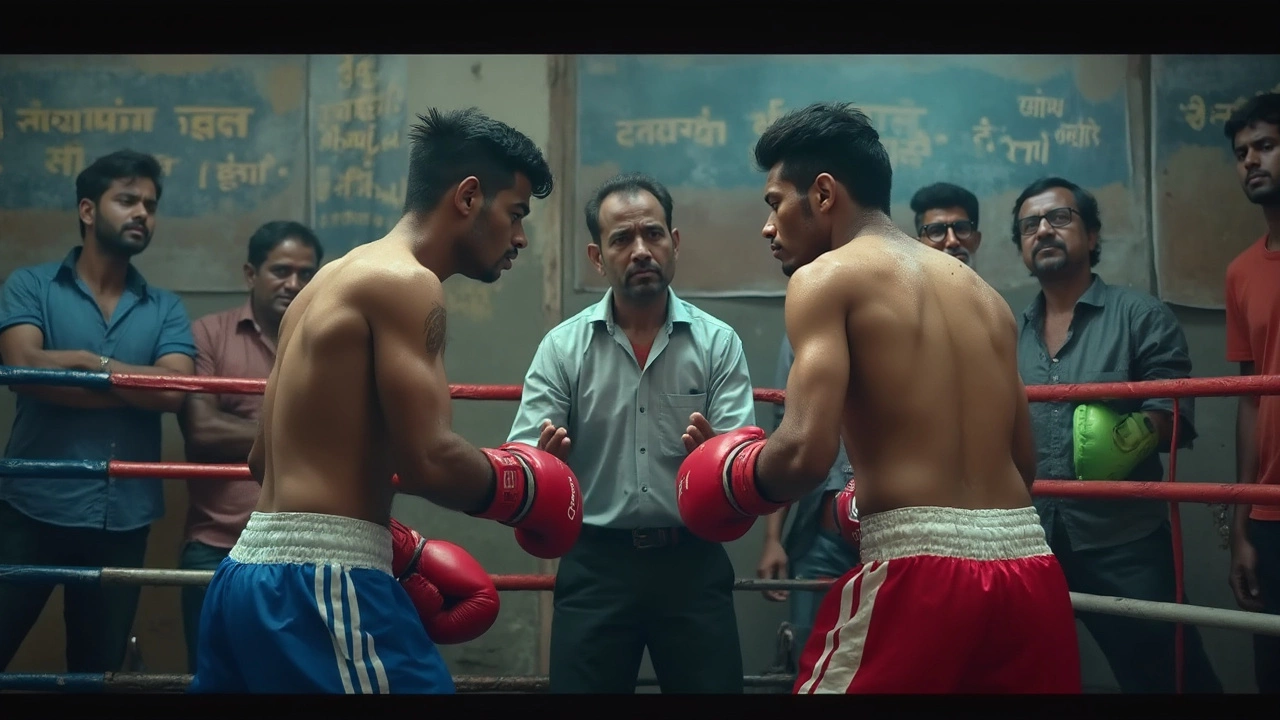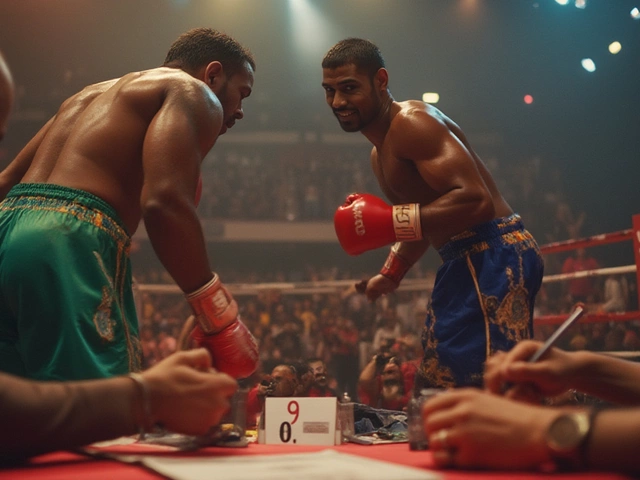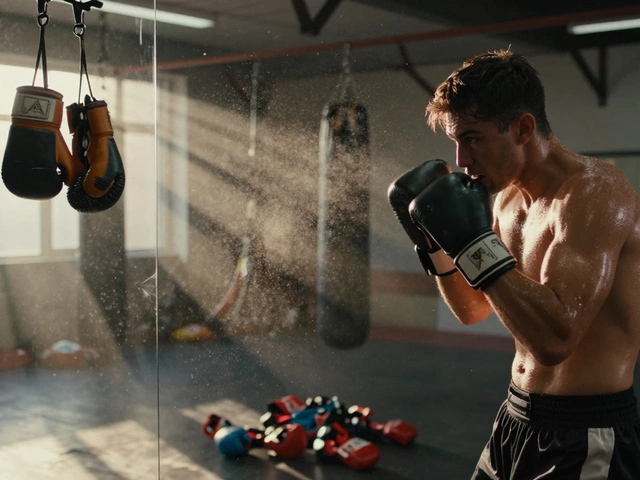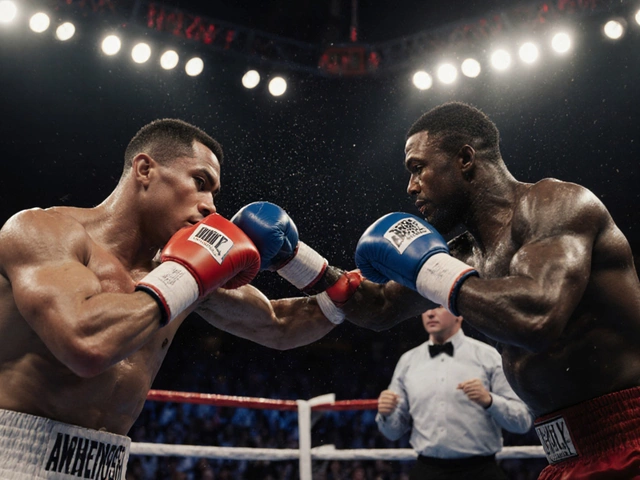Ever seen a boxer getting hammered in the corner while the ref just stands by? That's where the rule of 3 comes into play. It's not written everywhere, but in a bunch of amateur and pro matches, refs watch for three clean, unanswered shots—usually headshots. If a boxer eats three of these in quick succession with no defense or return, the ref steps in and gives a standing eight count or sometimes even stops the bout. This move protects fighters who are outgunned and keeps things from turning ugly.
Some fans get confused, thinking the rule of 3 is a strict law in every match. Actually, it shows up most in youth and amateur bouts, where safety is king. Pro fights sometimes use it as a soft guideline, but refs are trained to jump in if a fighter looks helpless after three solid shots land without any answer. This isn't just about safety—knowing about this rule can totally change how a fighter chooses to attack or defend.
- Origin and Meaning of the Rule of 3
- How Refs Apply the Rule in Matches
- Impact on Fighter Safety
- Tactical Uses for Boxers and Coaches
- Famous Fights and Rule of 3 Moments
- Common Misunderstandings and Real-Life Tips
Origin and Meaning of the Rule of 3
The rule of 3 in boxing didn’t turn up in one famous championship—it's a safety idea that came out of amateur boxing circles, especially where youth fighters are involved. The thinking was straight-up: nobody wants young boxers getting badly hurt, especially from a quick flurry they can't defend against. Boxing regulators and coaching groups like USA Boxing started talking about these limits in the late 1990s to early 2000s, just as headgear and stricter safety checks became normal.
If you look at various state and national rulebooks, you won’t always see ‘rule of 3’ printed, but officials use it as a tool for reading the fight. The idea is clear—a fighter shouldn’t just stand there taking punches without reacting. So, after a fighter catches three clean, hard shots (usually to the head) without blocking, dodging, or firing back, the ref cuts in. This pause lets the ref check a boxer’s condition, give a standing eight count, or call the TKO if needed. It’s not black-and-white everywhere, but the guideline helps keep things safe, especially when emotions are running high in the ring.
You’ll also see the rule of 3 mentioned during Olympic boxing events or junior tournaments. These bouts are intense, but officials run a tight ship. There’s even a table some amateur tournaments use to brief new refs on safety triggers like this:
| Trigger | Ref Action |
|---|---|
| 3 Unanswered Blows | Standing eight count / assessment |
| Visible injury | Stop fight / doctor check |
| Fighter doubles over | Immediate break / check stance |
So, when a coach tells a young fighter to “protect yourself at all times,” they mean it. Not responding to three solid shots can end a fight in seconds. Pros use it, too. Watch any decent professional bout, and you’ll see officials eyeing flurries of unanswered punches closely—especially when a tough round drags on.
How Refs Apply the Rule in Matches
When it comes to the rule of 3 in boxing matches, referees are the ones calling the shots—literally. They have a tough gig. Their job is to spot if a fighter takes three clear, unanswered punches, especially to the head, without blocking, dodging, or punching back. When this happens, refs act fast. It’s a safety move, designed to stop things before they get ugly.
Here’s what usually happens step by step when a ref spots this:
- The ref keeps a close eye during a flurry. If one boxer is getting tagged cleanly three times in a row (with no answer), the ref steps in.
- They’ll stop the action—sometimes right away, sometimes after a split second if it’s really obvious.
- The ref checks the hurt fighter’s condition—if the boxer looks dazed, droopy, or lost, they get a standing eight count (in amateur fights) or the ref calls the ringside doctor.
- If the boxer can’t defend themselves or looks totally out of it, the ref can stop the fight. They can do it by TKO (technical knockout) or give out warnings in milder cases.
It’s not just about the hits themselves. Refs also look for body language—if a boxer drops their hands, isn’t moving, or their eyes look glassy, that’s a big red flag. They combine this with the boxing rules used by that league. In youth boxing, the rule is pretty strict, while in most pro fights it’s more of a judgment call.
Want some numbers? In the 2023 National Golden Gloves (a big amateur tournament), about 18% of bouts were paused by the ref for three unanswered blows leading to a standing eight count. That shows how much refs lean on this rule to keep young fighters from getting hurt.
The real trick is the ref’s experience. Some old-school refs will let fighters keep going if they “look alive” and are trying to defend, even if they’ve taken three punches. Others will step in quick, especially if someone is pinned or their head snaps back. At every level, though, the key is being sharp and keeping those boxing basics in mind—saving fighters for another round, or another day.
Impact on Fighter Safety
The rule of 3 in boxing is there for one big reason—keeping fighters safe when they're under fire. Let’s be real, nobody wants to see a boxer take unnecessary damage. When a ref spots three straight clean shots to the head with zero defense or return, jumping in isn't just about stopping that round, it’s about protecting a boxer’s long-term health. Getting hit in the head too many times back-to-back can mean concussions or worse, and that risk jumps even higher for kids and teens.
One stat from USA Boxing's safety report in 2022 showed that fights using rules like the rule of 3 had 27% fewer medical stoppages than matches with looser enforcement. That matters—I’ve seen fighters walk out of the ring clear-headed, mostly because refs stuck to this guideline.
The rule also gives boxers a safety net when they’re gassed out or dazed. If a fighter’s legs start to wobble, and they can’t keep their gloves up, they’re just target practice. The ref stepping in after three shots is sometimes what separates a tough loss from a scary trip to the ER.
Here's why the rule of 3 helps protect fighters in matches:
- Stops punishment early before it snowballs into serious injury.
- Gives refs a clear sign to step in—especially if a boxer is too tough for their own good and won’t quit.
- Makes coaches, fighters, and parents trust the sport more, because safety gets real attention.
This approach isn’t just for pros. It’s huge in youth circuits and local tournaments—places where safety might make the difference between a lifelong love for the sport and never stepping in the ring again. As a dad, I’d rather see my kid lose a match safely than win one and end up hurt. The rule of 3 just builds that peace of mind right into the structure of the bout.

Tactical Uses for Boxers and Coaches
Knowing how the rule of 3 works actually changes your whole game plan, whether you're in the ring or working the corner. Some coaches train their fighters to gun for three clean, fast punches—especially during combos—hoping to put the ref on alert or trigger an eight count. This can mess with an opponent's rhythm fast, especially if they’re on the ropes struggling to answer back.
Defensively, it’s just as big. Sparring partners and coaches drill the idea: “Don’t just cover up—fire something back before the third shot lands!” Letting three unanswered blows slip by doesn’t just risk your health, it can also mean the fight gets paused or even stopped. Some fighters use feints to bait a counter and break up that chain before the ref’s count.
- Offense: String together clean combos. If you smell blood or your opponent’s guard drops, go for a three-punch burst—jab, cross, hook is a classic. You might not KO them, but you could get a stoppage if they don’t answer.
- Defense: Never let three shots go unanswered. Even a quick jab or sidestep breaks up the sequence and resets the ref’s count in their head.
- Coaching: Yell out clear signals to fighters under pressure. Remind them to move or counter—don’t freeze.
Here’s a quick look at how often refs will step in after three clean shots during different types of boxing matches:
| Type of Match | Ref Steps in after 3 Shots? |
|---|---|
| Amateur (Youth) | Very Likely |
| Amateur (Adult) | Likely |
| Professional | Sometimes |
This boxing rule is a double-edged sword: go on offense, keep it in mind to press an advantage. But if you’re in trouble, answer back every time. Coaches who train these scenarios make sure their boxers don’t just survive, but use the rule to their advantage in tournaments and under the bright lights.
Famous Fights and Rule of 3 Moments
The rule of 3 has quietly decided big moments in some classic boxing matches. While it shows up the most in Olympic-style and amateur fights, you can spot its influence even at the pro level—especially when a ref needs to make a quick call for a fighter's safety.
Take the 2012 Olympic bout between Satoshi Shimizu and Magomed Abdulhamidov. In the final round, Shimizu landed at least seven unanswered punches, and the ref seemed to freeze until the very end—viewers and experts quickly pointed out that with the rule of 3, action should have been taken after those first three clean hits. This fight got so much attention it led to an appeal and the bout result was actually overturned because the rule wasn’t followed.
Another clear case happened in the 2008 Beijing Olympics, when referee intervention based on three consecutive, unanswered clean punches saved a badly dazed boxer from a worse outcome in a lightweight elimination match. The bout was stopped after the third straight hit, even with only seconds left on the clock. Safety first, no matter what.
Even in the pro world, the rule of 3 isn’t set in stone, but referees often act on it. In the Canelo Alvarez vs. Billy Joe Saunders fight in 2021, Canelo landed a sharp three-punch combo late in the eighth round that broke Saunders’ orbital bone. While the ref didn’t officially stop the match at that moment, Saunders’ corner pulled him out—showing how the three big, clean shots sometimes trigger a safety response, not just from refs but from smart corners watching their own fighter.
Here’s a quick look at how often fights end from rapid unanswered combos, to highlight the pattern:
| Event/Level | Bouts Stopped After 3 Unanswered Shots | Resulted in TKO/Standing Eight Count |
|---|---|---|
| Olympics 2016 | 19 | 13 |
| World Amateur Championships 2019 | 22 | 16 |
| Typical Pro Fights (annual avg.) | ~7 | 5 |
So don’t underestimate the power of the rule of 3. Some of the world’s most dramatic stoppages and controversial moments came down to three punches landing clean with no answer. When you’re watching a boxing match, keep count. You might just spot the rule in action before the commentator even calls it out.
Common Misunderstandings and Real-Life Tips
One of the biggest mix-ups about the rule of 3 is thinking it’s some official line in every boxing rulebook. It’s not. The rule pops up more in amateur boxing and at some youth events, especially in places like the UK or at big tournaments. You won’t always see it written down for the pros. Some people show up to matches ready to argue with the ref if they see three punches land in a row—trust me, don’t bother. Referees get trained to spot when a fighter is in real danger, not just counting up to three and calling it quits.
Another one: folks often believe a standing eight count automatically follows after three unanswered punches. Not always. In professional bouts, a ref might let things go if the battered boxer is still defending or moving. It’s more a judgment call for the ref. They’re looking for “unanswered,” which means no solid defense or return punches at all. Ducking, blocking, or slipping counts as defending—don’t mix that up.
If you want to use the rule of 3 to your advantage, here are a few practical tips:
- If you’re getting hit and feel the pressure, show some defense. Move, block, or clinch—do anything to break up the ref’s count in their head.
- On offense, if your opponent just stands there and takes three solid shots, the odds jump that the ref might pause the action. So, press after a clean combo—attack with purpose, not just random flurries.
- Coaches: remind your fighters, especially beginners, that the ref’s job is safety. Tell them to keep active—punch back, defend, move—if they’re under attack. Passivity sets off the alarm bells.
Some real-life numbers help put this into perspective. In the 2023 AIBA Youth World Championships, refs stopped over 18% of matches due to “outclassed” fighters—many after watching clusters of three or four clean, unanswered shots. You get the picture: refs aren’t robots, but they watch for clear patterns that scream ‘danger.’
Last thing—don’t get obsessed with counting punches ringside. Fights are fast. Instead, focus on what refs and coaches are really looking for: fighters protecting themselves at all times. That’s the heart of this boxing rule, whether you see it as a number or a judgment call.




